Maritime industry giants are ready to explore ammonia as green fuel for U.S. East Coast. Namely, A.P. Moller – Maersk, American Bureau of Shipping, Fleet Management Limited, Georgia Ports Authority, Maersk Mc-Kinney Moller Center for Zero Carbon Shipping, Savage Services, Sumitomo Corporation, and TOTE Services have signed a Memorandum of Understanding (MOU) to study the establishment of a comprehensive and competitive supply chain for the provision of green ammonia ship-to-ship bunkering on the US East Coast. This study is planned to be conducted at the Port of Savannah, the third busiest gateway for containerized trade in America. The study aims to cover the entire end-to-end supply chain of ammonia bunkering, which includes the development of a cost-effective green ammonia supply chain, the design of an Ammonia Bunkering Articulated Tug-Barge (AB-ATB), as well as related supply chain infrastructure. In addition, safety assessments are critical to formulating standards for use of ammonia as a marine fuel. Relevant government agencies and experts in the US will be engaged in working towards the standardization of safe operations and regulations, the companies behind the study said.
Alliances for Decarbonization
Yara Clean Ammonia, a subsidiary of Norwegian fertilizer company Yara International, and Enbridge, a Canadian pipeline and energy company, have signed of a letter of intent to jointly develop and construct a world-scale low-carbon blue ammonia production facility as equal partners. According to Yara, the proposed facility, which includes autothermal reforming with carbon capture, will be located at the Enbridge Ingleside Energy Center (EIEC) near Corpus Christi, Texas, US, and once operational, it will be capable of supplying low-carbon ammonia to meet growing global demand, with an expected capacity of 1.2–1.4 million tons per annum (MTPA). Approximately 95% of the carbon dioxide (CO2) generated from the production process is anticipated to be captured and transported to nearby permanent geologic storage.
Japanese duo to support the development of next-gen marine fuel engines: As the movement toward the “realization of a decarbonized society” accelerates, J-ENG plans to deepen and strengthen the cooperation with Akasaka, a UE engines manufacturer under UE license, to promote the development and popularization of next-generation fuel engines with this technical agreement. Under the agreement, J-ENG is proceeding with the development of ammonia fuel engines and hydrogen fuel engines under the Green Innovation Fund project by New Energy and Industrial Technology Development Organization (NEDO). In addition, the technology developed and used in these next-generation fuel engines can be applied not only to ammonia and hydrogen, but also to a wide variety of new fuels such as methanol, and has wide potential for future development, according to the company.
Industry Actions
Norwegian liner targets 50% emission cuts by 2025: North Sea Container Line (NCL), a small Norwegian liner with five ships in its fleet, has laid out highly ambitious decarbonization plans, seeking to slash fleet emissions by 50% by 2025. To this end, the company has signed an agreement with carbon analytics company Siglar Carbon. NCL has ordered two dual-fuel methanol ships that will replace three smaller ships in 2025. The ship hull and hold are optimized for energy efficiency and the ship size is maximized for the Norwegian coast. All design measures add up to a 63% reduction in energy use per tonne mile. However, emissions numbers will also be impacted by the operation of the fleet. Therefore, NCL operators have KPIs related to energy use per container and will receive daily updates from Siglar Carbon.
Next Generation of Vessels
BULKER
J. Lauritzen books methanol dual-fuel bulkers in Japan: J. Lauritzen, a Danish investment company focused on maritime industries, has signed a letter of intent (LoI) with Japanese shipbuilder Tsuneishi Shipbuilding for the construction of methanol dual-fuel bulk carriers. The LoI includes the construction of a minimum of two methanol dual-fuel 81,200 dwt Kamsarmax bulk carriers which will be capable of trading with zero-carbon emissions when powered by green methanol and biodiesel.
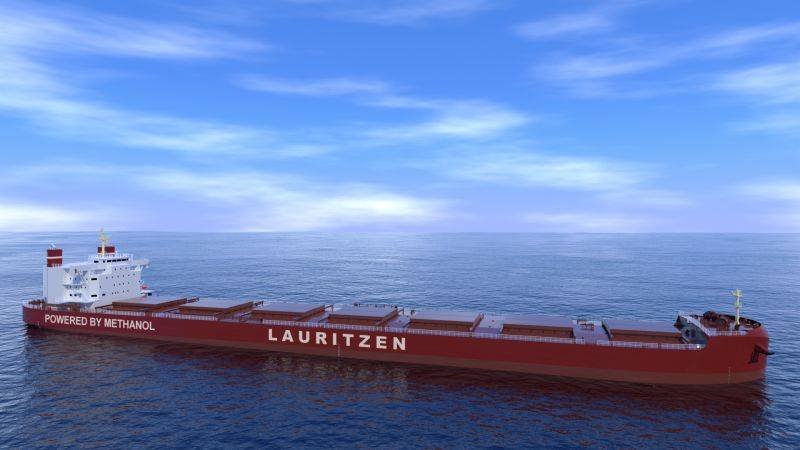
TANKER
V-Bunkers to welcome its first electric-hybrid bunker tanker: Vitol’s Singaporean bunker operations company, V-Bunkers, has revealed that it will be taking delivery of its first electric-hybrid bunker tanker, Marine Charge. The vessel was built by Zhejiang Shenzhou Sunshine Heavy Industry Co. and designed by a Singapore-based designer. Classed by the classification society Bureau Veritas (BV), the electric-hybrid bunker tanker features advanced energy storage and charging technologies that will help curb greenhouse gas emissions (GHG) from port operations in Singapore. V-Bunkers placed an order to build two of these vessels in 2021, with the second tanker, Marine Dynamo, scheduled for delivery in Q2 2023. These electric-hybrid bunker tankers are designed to significantly reduce carbon emissions in port locations and will be deployed for harbor operations within Singapore.
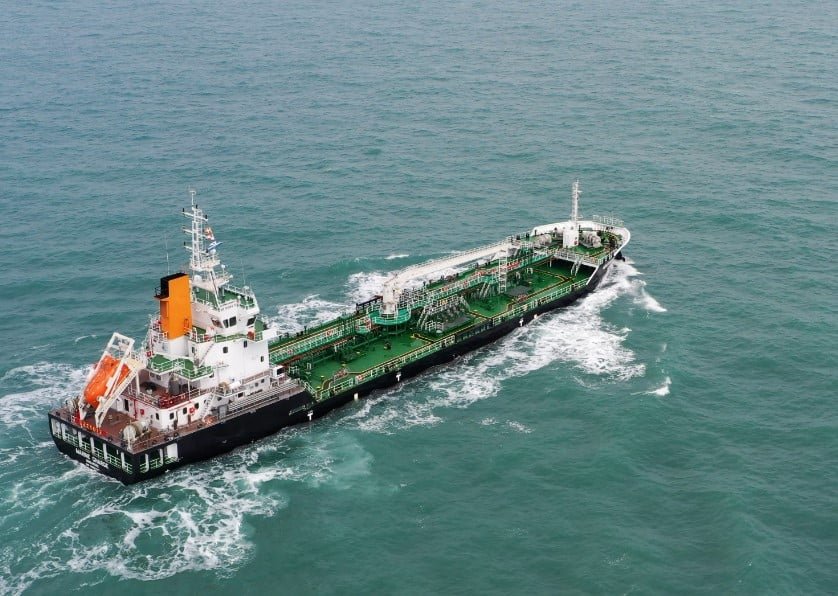
LPG
Dorian LPG welcomes its 1st dual-fuel LPG carrier: Japanese shipbuilder Kawasaki Heavy Industries (KHI) has delivered the 84,000 cbm dual-fuel liquefied petroleum gas (LPG) carrier, Captain Markos, to US-headquartered LPG shipping company Dorian LPG. The vessel, delivered on 31 March, is Dorian’s first dual-fuel very large gas carrier (VLGC) and will join the Helios LPG Pool, the shipping company said. The vessel can use both LPG and low-sulfur oil. Captain Markos is the seventh 84,000 cbm LPG carrier adopting a dual-fuel main engine that was built by KHI. At the same time, Captain Markos is the 70th LPG carrier built by the company.
CRUISE / FERRIES
Keel laid for LNG-powered Disney Treasure: German shipyard Meyer Werft has laid the keel for Disney Treasure, the second LNG-powered cruise ship it is building for the US-based Disney Cruise Line. According to Meyer Werft, the keel laying ceremony took place on 31 March to celebrate the start of hull assembly for the new cruise ship by placing the first component in the more than 500-meter-long covered building block. The so-called block for the ship’s bow weighs 719 tons, is 30,9 meters in breadth, is 23,3 meters long, and 12,6 meters high. Disney Treasure will have 1,240 cabins and a size of 144,000 GT and will be delivered in 2024. It is the second out of three cruise ships equipped with low-emission LNG propulsion that Meyer Werft is building for Disney Cruise Line. Its sister ship, Disney Wish, was delivered last year. The German shipyard will build the remaining cruise ship throughout 2025.
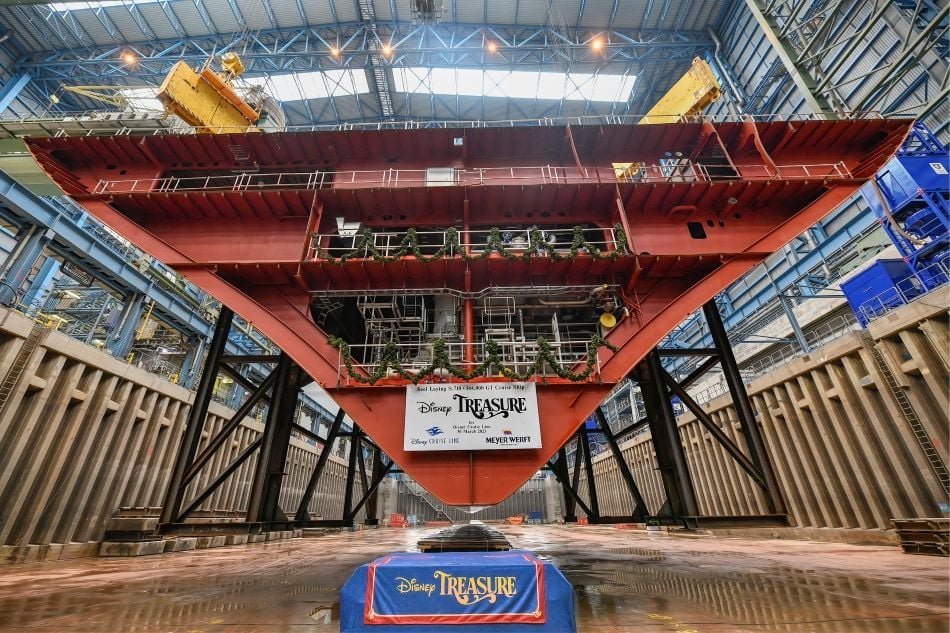
MF Hydra starts the world’s first voyage on emission-free liquid hydrogen: MF Hydra, the world’s first liquid hydrogen-powered ferry operated by Norwegian company Norled, is breaking ground as it starts sailing on zero-emission hydrogen with a blessing from the Norwegian Maritime Authority. The ferry is put into operation on 31 March, running on zero-emission hydrogen, and marking a historic day, both for Norled and for Norway as a leading shipping nation, Norled’s CEO Heid Wolden said. Norled said it has been carrying out system tests at the quay in Hjelmelands since the turn of the year. In recent weeks, the company has been running sea trials and received the final approvals from the Norwegian Maritime Authority (NMA).
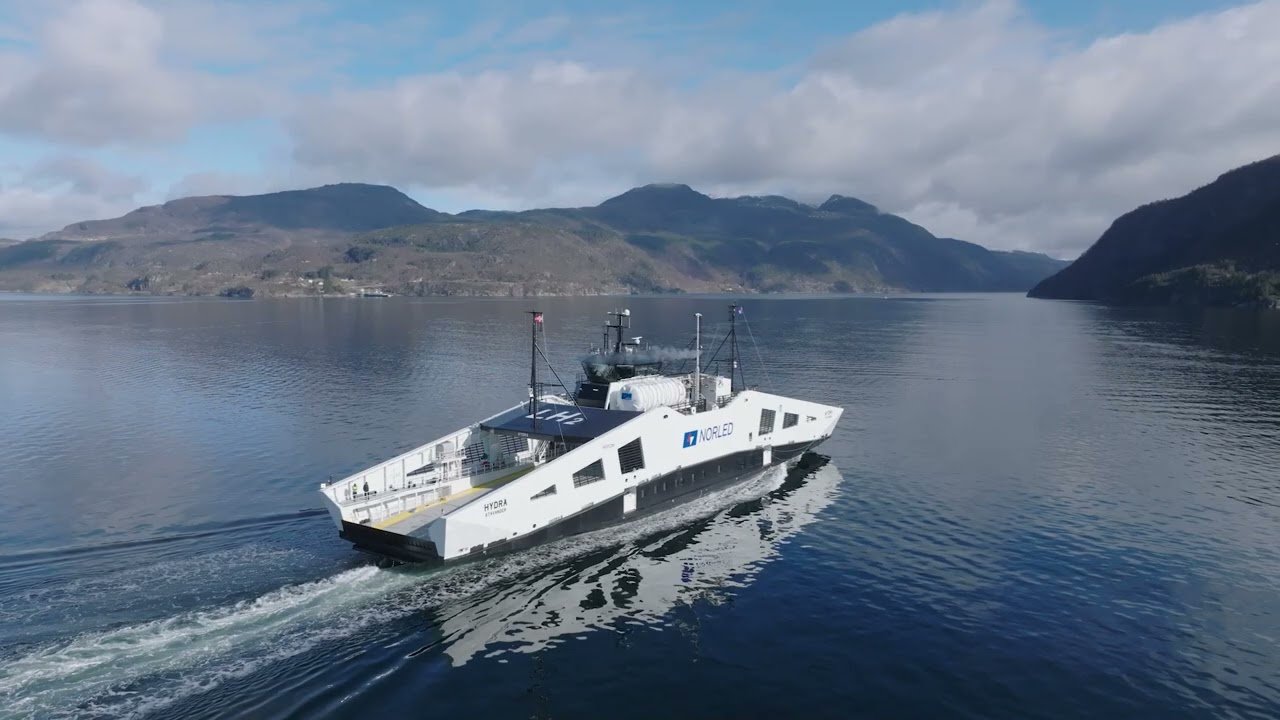
Swan Hellenic takes delivery of a hybrid diesel-electric expedition ship: The hybrid diesel-electric expedition ship has a polar Class 6 ice-strengthened hull, and it has been constructed by the Finnish Helsinki Shipyard. The vessel delivery ceremony took place at the shipyard on March 31 and SH Diana is now en route in the Baltic, on her way to the Mediterranean, where cultural expedition cruising is set to begin. The delivery is being reported just as SH Diana returns from sea trials.
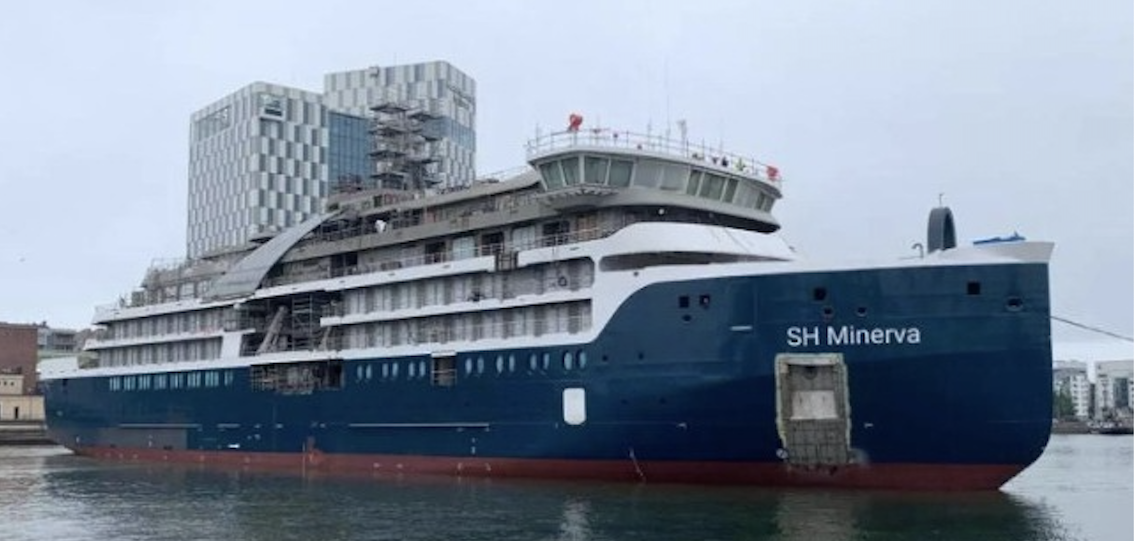
Austal inks LoI for the design of a hydrogen-powered catamaran: Australian shipbuilder Austal has signed a Letter of Intent (LoI) with Swedish Rederi AB Gotland to design a high-speed catamaran that will be able to run on hydrogen. As informed, the partners intend to develop a high-speed catamaran with multi-fuel solutions designed for fossil-free fuels, including hydrogen. Gotland Horizon X will be 130 meters long and will be able to travel at 35 knots. The vessel will be able to carry 1,650 passengers and have space for 450 passenger cars. It is planned to be used in Gotland traffic.
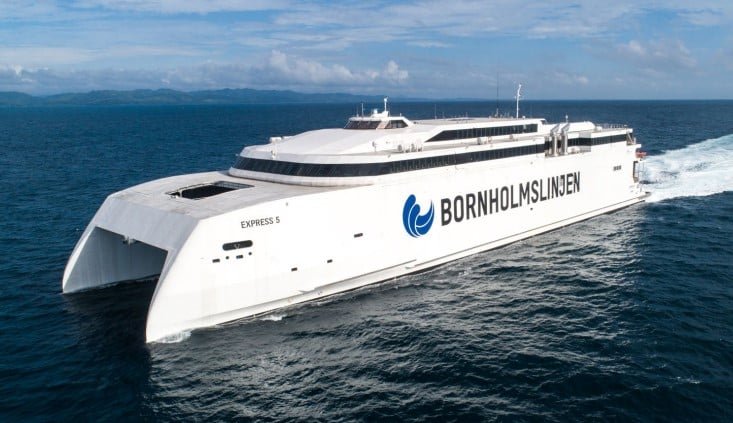
OTHER
CMES firms up a deal to build 2+4 methanol-powered ROROs: The company said that the contract for the two firm 9,3000 CEU RoRo vessels includes options for additional four ships of the same size. CMES will be paying around $192 million for the two vessels ($96 million per ship), and should the company proceed with the exercising options for four additional ships the price is expected to reach $384 million. The methanol-powered RoRo pair is planned for delivery in the first half of 2026, with the rest set to follow by the end of 2026. The company said that the transaction still needs to be approved by the company’s shareholders before taking effect. Both companies are under the control of China Merchants Group. The order is being placed on the back of growing demand for vessels in the car transport sector, especially in China, which is experiencing a significant expansion of its automobile exports.
Technology
IINO Lines to install Norsepower rotor sails on a newbuild VLGC: Finnish cleantech company Norsepower Oy has signed a contract with global shipping company IINO Lines for the delivery and installation of two Norsepower Rotor Sails™ on a newbuild Very Large Gas Carrier (VLGC). The LPG dual-fuel vessel was delivered from Daewoo Shipbuilding & Marine Engineering Co., Ltd in Korea, and it is ready to be equipped with two bespoke 20m tall Norsepower Rotor Sails™ side by side. Specifically, the vessel has already been fitted with Norsepower Rotor Sail™ foundations. Norsepower said that the specially designed, 20m x 4m units have been developed to accommodate the vessel’s specific air draught limits. The installation is scheduled to take place in the second quarter of 2024. Following calculations, Norsepower estimates the Rotor Sails will reduce the fuel consumption and CO₂ emissions from the vessel by approximately 4%.
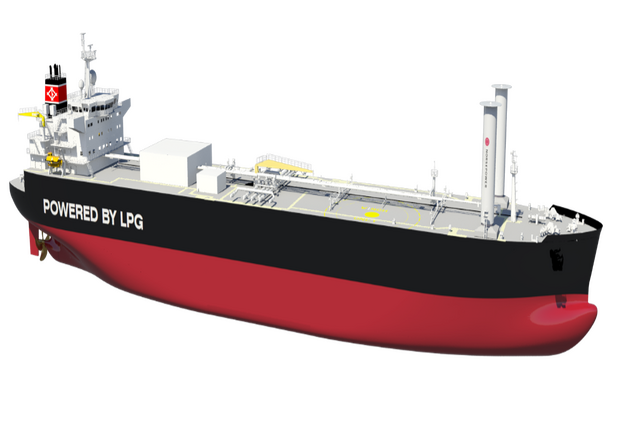
CORE POWER details nuclear-powered feeder boxship design: The Mikal Bøe-led firm has developed a 2,800 teu feedermax design, to go alongside other designs it has created for different sectors. Among the many ship owners backing CORE POWER is Tim Hartnoll’s X-Press Feeders, one of the world’s largest feeder operators. At a client event last September, CORE POWER identified the reasons its molten-salt reactor could revolutionize container shipping.
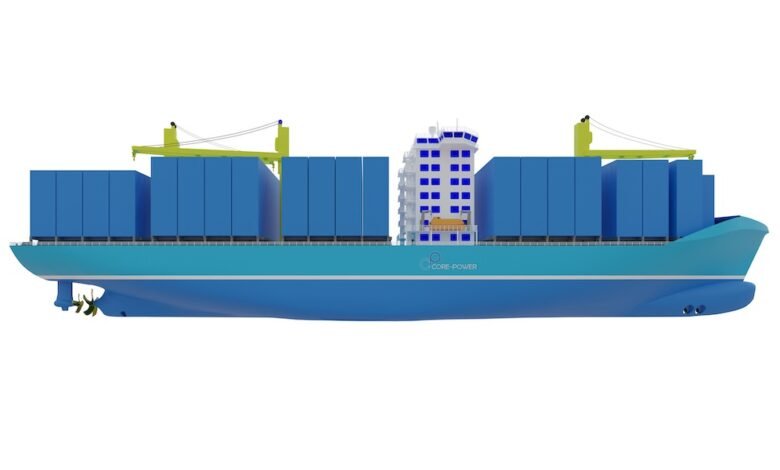
Shipyards
Consort Bunkers orders six methanol bunkering vessels at Nanjing Jinling: Singapore shipowner Consort Bunkers has signed a contract with China Merchants Industry Nanjing Jinling Shipyard for six 6,500-ton methanol fuel bunkering ships. The 6,500-ton methanol fueling ships have a total length of 103.88 meters, a molded width of 19.00 meters, and a design draft of 7.00 meters. They are suitable for carrying methanol, fatty acid methyl ester, biofuels, and more, the shipyard said. The contract signing comes after months of negotiations between the two sides, as both parties look at ways of helping the industry reduce carbon emissions. The order is being placed in the wake of the growing demand for methanol as fuel by ship owners.
Wuhu Shipyard bags orders for eight methanol-ready chemical tankers: China’s Wuhu Shipyard has inked a contract for the construction of eight 18,500-ton IMO Class II chemical tankers during the first quarter of this year. These tankers will have a load tonnage of 18,500 tons, cargo capacity of 21,000m³, length of 149.80m, molded width of 22.80m, molded depth of 12.70m, and design draft of 8.50m. The ships have been designed to incorporate the latest technology, and they will be designed as methanol dual-fuel ready. Wuhu Shipyard said the design concept complies with the IMO Tier III emission standards. Moreover, the ships have been specifically designed to transport various biofuels and IMO Type II chemicals, including methanol, Wuhu Shipyard said. Scheduled for delivery starting in mid-year 2024, the first two ships will be exclusively involved in the transportation of offshore wind turbine components in a long-term commitment with Siemens Gamesa Renewable Energy.
Cemre Shipyard starts construction of Molslinjen’s electric ferry: Turkish shipbuilder Cemre Shipyard has held a steel-cutting ceremony for the new electric ferry being built for Danish ferry operator Molslinjen. As informed, the steel for the vessel Samsølinjen was cut on 4 April. The 116,8-meter-long double-ended ferry is designed by OSK-ShipTech A/S, a Danish design services company. In October last year, Molslinjen signed a contract with the shipbuilding company for two zero-emission ferries that will be entirely powered by batteries. Swedish energy systems provider Echandia has been contracted to supply energy storage solutions for two new fully electrified vessels.
Fuels
AMMONIA
H2Carrier and Trelleborg to work on ship-to-ship ammonia transfer solutions: The two companies will collaborate in developing a safe, reliable, and efficient solution for side-by-side offloading of ammonia when operating the P2XFloater™ on sheltered near-shore projects. H2Carrier said the scope will be based on Trelleborg’s KLAW LNG technology, which is already supporting a wide range of LNG operations globally and has been upgraded to operate with liquid ammonia. It explained that this KLAW LNG solution enables the P2XFloater™ to be used as an ammonia export terminal for the green ammonia produced and stored onboard the P2XFloater™, thus minimizing the need for onshore infrastructure.
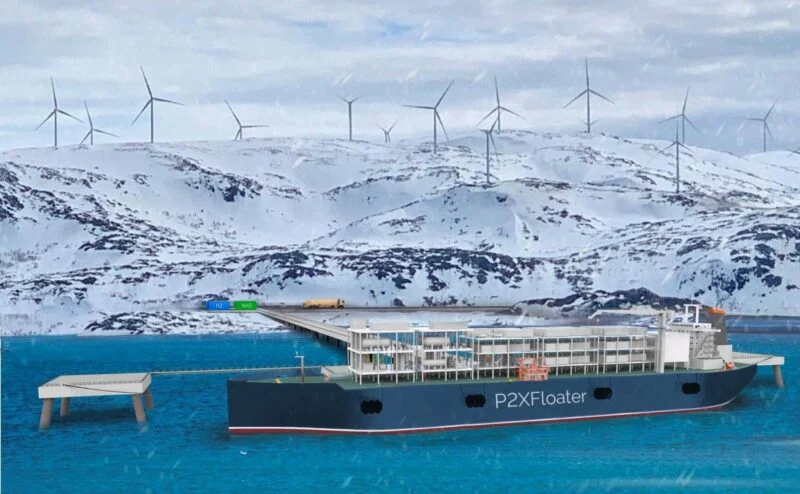
Singapore, the world’s top bunkering hub, is getting the infrastructure in place for shipping’s future fuel mix where methanol will play a significant role: Local firm Consort Bunkers has just contracted China Merchants Jinling Shipyard to build six 6,500 dwt methanol bunkering tankers while compatriot Global Energy Group is set to receive its first 4,000 dwt methanol bunkering vessel from Japan’s Sasaki Shipbuilding in the final quarter of this year. Another bunker supplier, Golden Island Diesel Oil Trading, is readying to order a methanol tanker up to 12,000 dwt in size for delivery in 2026. Six companies, including Danish carrier Maersk, have formed a partnership that is building Asia’s first green e-methanol plant which converts captured biogenic carbon dioxide (CO2) into green e-methanol. The plant is being set up in Singapore with a minimum production capacity of 50,000 tons per annum.
The figures for March from DNV’s Alternative Fuels Insight (AFI) platform show 10 total vessels with alternative fuel propulsion were ordered in March 2023: Eight of those vessels were LNG-powered, with two hydrogen-fuelled small container ships with fuel cells also booked. There were no new orders for methanol vessels, said DNV. The figures for March reflect the broader trend as far as LNG is the dominant alternative fuel for ships on the water and on order, with 894 total vessels comprising 379 built and 515 on order. The figures exclude LNC carriers. Methanol was absent from the March orders list but there are 26 methanol-fuelled vessels in operation and a further 80 on order. As DNV tracks the ramp-up of interest and investment in alternative fuels, CEO Maritime at DNV Knut Ørbeck-Nilssen warned at CMA Shipping 2023 in March that new fuels will be late to the market and in short supply.
Ports
Napier Port to drive down emissions with new equipment: Napier Port, one of New Zealand’s largest ports, has taken delivery of four new Kalmar container handling machines after a comprehensive procurement process that was aligned with the port’s emissions reduction strategy and wider sustainability objectives. As informed, the port took delivery of two eco-reach stackers and two empty container handlers. These machines have a natural, long-term life cycle, so it is critical that the right environmental and investment decisions are made as the port works towards its goal of net-zero emissions by 2050.
Regulations
EU reaches an agreement on a higher renewable energy target for 2030: The European Union has reached a provisional deal to raise the share of renewables in its final energy consumption to 42.5% by 2030, under the revision of the Renewable Energy Directive (RED). The deal, reached on March 30, 2023, brings the EU one step closer to completing the ‘Fit for 55’ legislation to deliver the European Green Deal and the REPowerEU objectives. The agreement raises the EU’s binding renewable target for 2030 to a minimum of 42.5%, up from the current 32% target and almost doubling the existing share of renewable energy in the EU. Negotiators also agreed that the EU would aim to reach 45% of renewables by 2030. A massive scaling-up and speeding-up of renewable energy across power generation, industry, buildings, and transport will reduce energy prices over time and decrease the EU’s dependence on imported fossil fuels, according to the European Commission.
By Maria Bertzeletou
Source:
Breakwave Advisors
The opinions expressed herein are the author's and not necessarily those of The Xinde Marine News.
Please Contact Us at:
media@xindemarine.com










 Ningbo Containerized Freight Index Weekly Commentar
Ningbo Containerized Freight Index Weekly Commentar  Ningbo Containerized Freight Index Weekly Commentar
Ningbo Containerized Freight Index Weekly Commentar  Ningbo Containerized Freight Index Weekly Commentar
Ningbo Containerized Freight Index Weekly Commentar  BIMCO Shipping Number of the Week: Bulker newbuildi
BIMCO Shipping Number of the Week: Bulker newbuildi  Ningbo Containerized Freight Index Weekly Commentar
Ningbo Containerized Freight Index Weekly Commentar  Ningbo Containerized Freight Index Weekly Commentar
Ningbo Containerized Freight Index Weekly Commentar